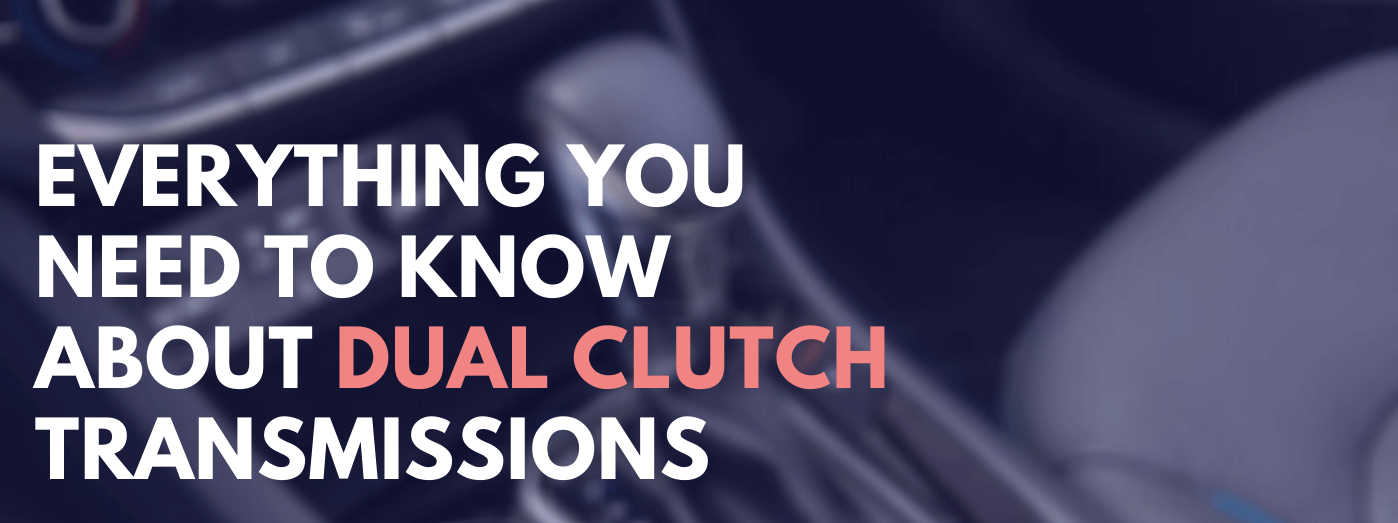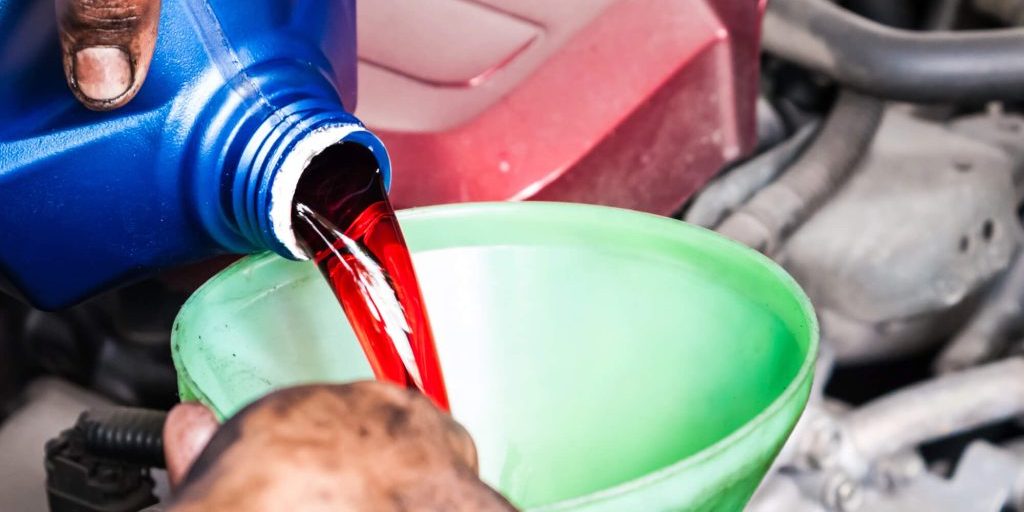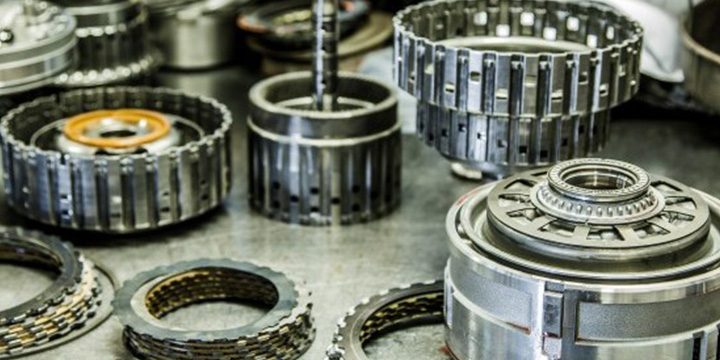Everything you need to know about DCT transmissions
August 18, 2020

With so many transmission options on the market, it can be challenging to decide which one best meets your needs. While car manufacturers promptly produce automatic and manual transmissions, recent years have seen some serious contenders enjoying their fair share of acclaim. One such type? The dual-clutch or DCT transmission.
If you’ve never driven a car with a dual-clutch transmission, we think you’re missing out. This unique transmission type earns a top spot thanks to a unique set of benefits.
Never heard of it before? No worries – we can help. Here’s our ultimate guide to dual-clutch transmission systems.
What is a Dual Clutch Transmission?
It goes by many different names. Volkswagen has dubbed dual-clutch transmission cars DSG (Direct Shift Gearbox). Porsche calls it PDK (Porsche Doppel Kupplungs getriebe), Audi prefers S-Tronic. EcoShift, SpeedShift, and PowerShift have all been thrown into the pot (by Hyundai, Mercedes Benz, and Ford, respectively). Still, the various monikers all refer to the same thing: the dual-clutch transmission.
In the past, you were more likely to find a dual-clutch transmission in a racing car than anywhere else. These days, you can probably find it just by visiting your nearest car dealership. But what exactly is it?
To put it simply, a DCT gearbox combines a manual and automatic transmission, offering the convenience of a computerised shifting system with all the fun and economy of a manual system (along with some other pretty great benefits).
How Do Dual Clutch Transmission Cars Work?
A dual-clutch transmission closely resembles a manual transmission but uses two clutches to synchronise gear changes instead of one. Each clutch operates a different set of gears – one controls the even-numbered gears while the other controls the odd-numbered gears. Clutches can be wet, immersed in oil for better heat resistance, or dry.
The clutches share the same space but are actually two separate control shafts, one inside of the other. This allows them to move together but act upon different gears, offering smoother transition, greater fuel efficiency, and higher speeds compared to manuals.
So, it’s just a fancy manual transmission? Not quite! One key difference is that dual-clutch transmissions are operated through built-in computer systems, which means that drivers don’t have to press on the clutch and continually change gears. Although, if you enjoy the process, a dual-clutch transmission still allows you to manually change gears when desired.
How Does DCT Compare Against Other Transmissions?
What is it that makes dual-clutch transmissions stand out from the crowd? You might be surprised to know that the differences run pretty deep. Despite some surface similarities, the dual-clutch system’s unique design is robust enough to remain popular even compared to more common systems such as manuals and automatics.
Here’s how dual-clutch measures up to other popular car transmissions:
DCT vs. Automatic Transmission
While a DCT transmission looks similar to an automatic transmission system – both use a gear shifter with similar options (Park, Reverse, Drive, etc.) – that’s where the similarities end.
The most significant difference between the two systems is that an automatic transmission uses a torque converter to shift its own gears, allowing the driver no further control over the process other than operating the accelerator and brake pedals, which lets the engine know which gear it should be using. Dual-clutch transmissions may operate automatically, but there is an option to control them manually as well.
DCT vs. Manual Transmission
Both transmission types operate using synchronises and shift forks, making DCT and manual transmissions very similar. The main difference between a DCT and a manual transmission is that manuals require drivers to operate the clutch to shift gears. At the same time, a DCT is controlled by an electronic control module (ECM) and therefore does not need a clutch pedal.
Drivers can still use buttons and gear shifts to control the vehicle. Additionally, dual-clutch transmissions use two clutches instead of the single one that is common in manual systems.
DCT vs. CVT/eCVT
A continuously variable transmission (CVT) uses a rotating belt and pulleys to allow drivers access to an infinite number of gear ratios between a specific limit. Like a DCT, CVT systems operate with maximum fuel efficiency and have better acceleration rates than other transmissions. Unlike a DCT, CVT does not allow the driver to shift gears.
The main difference between the two transmissions is that CVT types are more likely to be used in high-volume, low-performance cars, while dual-clutch transmission cars are often high-performance.
DCT vs. ZF Transmission
Unlike the dual-clutch automatic gearbox, a ZF transmission is designed not for speed but for minimised fuel consumption. The ZF transmission offers great shifting but may lack the same speed that a dual-clutch system can give you. While the DCT type uses two clutches to control gears, a ZF system utilises three and two brakes and four planetary gear sets.
What Are the Pros of a DCT Transmission?
Why drive with a DCT? Besides being one of our favourite transmissions, the dual-clutch offers excellent benefits that every driver can enjoy.
1. Fuel-Efficiency:
Thanks to smoother and quicker gear changes, DCT has a heightened fuel economy because the engine experiences a steady power flow. Dual-clutch vehicles enjoy approximately 6.0% more fuel efficiency when compared to standard automatic vehicles.
2. Increased Speed:
Manual drivers can take up to a full second to shift gears due to time wasted using the clutch pedal. The speed DCT allows to change gears is approximately 1/10th of a second—faster shifting, faster acceleration, more incredible speeds – the perfect recipe for high-performance vehicles.
3. Eliminates Shift Shock:
No more lurching around in your seat – the DCT offers smoother gear changes thanks to the computer-automated system.
This not only eliminates shift shock (a common occurrence in manual transmission vehicles) but also does away with any unappealing knocking and clunking sounds that most manual vehicles experience.
4. More Driving Options:
Having a dual clutch automatic gearbox offers all the fun of driving a manual transmission vehicle with an automatic ease. You can sit back and let the car do the shifting or operate the gear shift yourself – you choose!
What Are the Cons of a DCT Transmission?
As great as dual-clutch transmissions are, like every type of transmission type, they do have their drawbacks. One of the most common complaints about a DCT is that it tends to jerk and lurch when driven at lower speeds, such as in a parking lot or when the car is in reverse.
This can be frightening for drivers in tight spaces or unused to driving with this particular transmission type. Of course, this doesn’t mean you can’t still enjoy driving with a DCT!
Additionally, DCT is not the cheapest transmission type on the market. This can drive prices up, making it a less appealing transmission type for price-savvy purchasers.
Pros
- Fuel efficient
- Increased speed & performance
- Eliminates shift shock
- Flexibility to operate the gear shift manually or let the car do it automatically
Cons
- If you’re not used to driving a DCT, it can jerk/lurch when driven at lower speeds
- Can be expensive
Caring for Dual Clutch Transmission Cars
The best way to care for your DCT is to ensure that the dual-clutch transmission system receives regular servicing from professional car transmission specialists like Automatic Transmissions R Us.
Auto Trans R Us is the automatic choice to solve all your transmission issues! It doesn’t matter if you need a general transmission service or you’re looking for an upgrade – there’s nothing that our skilled and experienced team can’t fix!
Contact the DCT Transmission Experts!
Contact the Auto Trans team today by sending through an enquiry, emailing info@autotransrus.com.au or giving us a call on (08) 9240 5449! We’ll have you back in your car in no time!
Read on...



